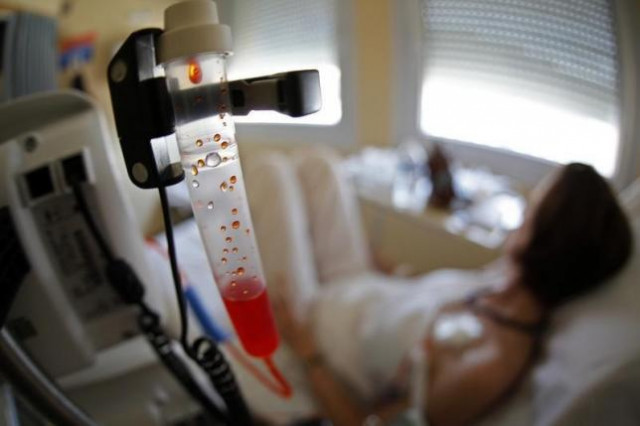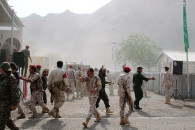Pink October: Early detection key to beating breast cancer
PIMS to inaugurate first dedicated centre for the disease later this month

Under the project, as many as 280 lady health workers in rural areas were also trained for conducting the tests. PHOTO: REUTERS
Despite best efforts of the doctors, she died the following day, prompting relatives to accuse staff at the hospital for not providing her the proper care and treatment.
However, a subsequent investigation revealed that Akhtar was in the last stage of her breast cancer and her lungs were full of fluid, causing her death due to the metastatic disease. Doctors had little chance to saver at that point.
Akhtar was the one in 7.7 Pakistani women who suffer from breast cancer. And while the national incidence average is close to the global average, death rates in Pakistan are far higher than in other parts of the world owing to a lack of diagnosis and treatment facilities.
“A majority of women come to hospitals quite late with the cancer penetrating their bones and spreading to their organs,” said Dr Ayesha Isani, an associate professor of Radiology and Deputy Project Director of Breast Screening Programme at PIMS. Seeking treatment late reduces their chances of survival by 24 to 50 per cent, she said.
She lamented that hospitals at times refuse to treat such patients because it adversely affects their statistics of mortality rates, and that such patients either expire within weeks. “Early detection is key, and it can help save lives,” Dr Isani said, adding that every woman must undertake self-examination while early diagnosis at the first and second stage and immediate treatment increases the chances of survival to 90 to 95 per cent.
“One woman dying is one too many because it makes the whole family suffer”. According to the Pink Ribbon campaign, of the 90,000 women who are diagnosed with the cancer in the country, around 40,000, or just less than half, die from it.
Public screening
However, under a federal programme to screen for breast cancer, PIMS had screened around 700 women from October 2015 to October 2016 and found that about 90 women have the disease.
Of a total of around 500 women who had undergone mammogram tests at the screening camps in rural areas surrounding Islamabad, around 50 women had been diagnosed with breast cancer with some patients still undergoing biopsies.
The remaining 218 patients had visited the outpatient department of the hospital with different complaints. Of these, around 40 women had been diagnosed with the disease with a rate of one in five.
Under the project, as many as 280 lady health workers in rural areas were also trained for conducting the tests. During the exercise, one of the health workers discovered that she was afflicted with the disease as well. However, since it was detected early, she is presently undergoing treatment at PIMS.
Fortunately, at the end of this month the first dedicated public ‘one stop’ breast clinic will be inaugurated at PIMS and Shaheed Zulfiqar Ali Bhutto Medical University in Islamabad (SZAMBU).
Published in The Express Tribune, October 17th, 2016.



















COMMENTS
Comments are moderated and generally will be posted if they are on-topic and not abusive.
For more information, please see our Comments FAQ